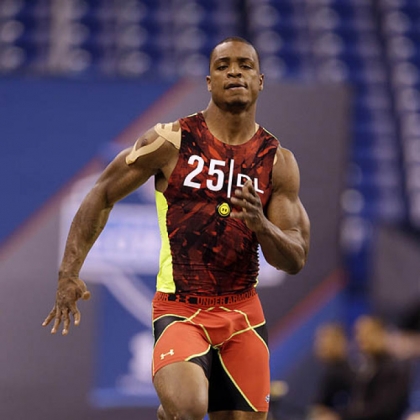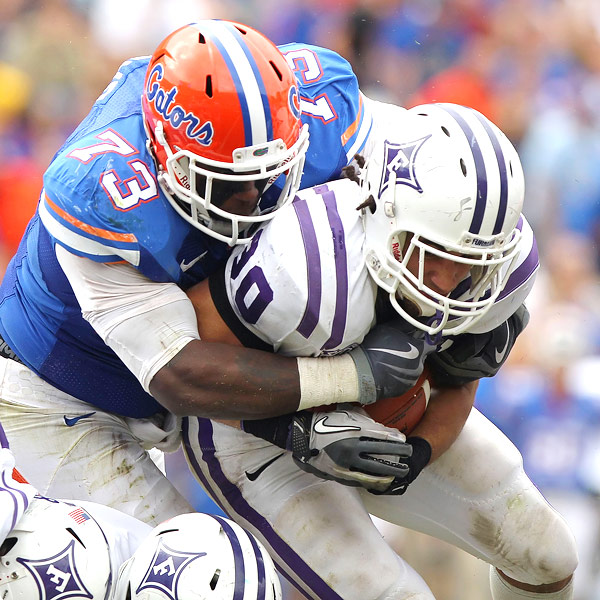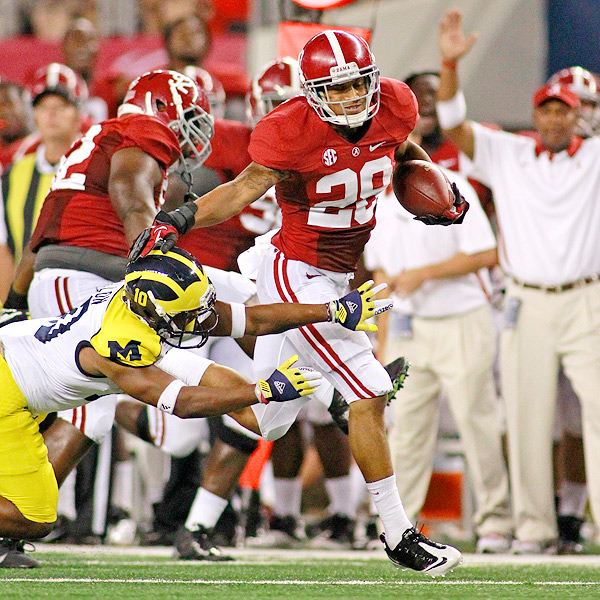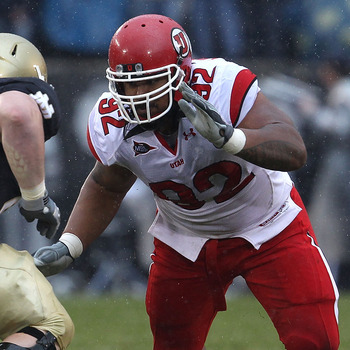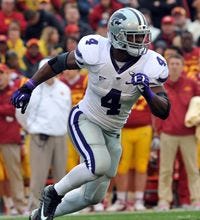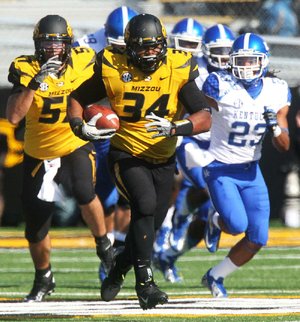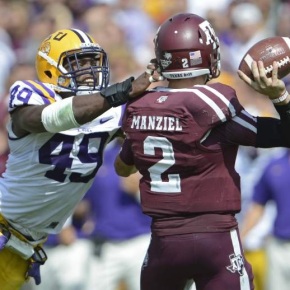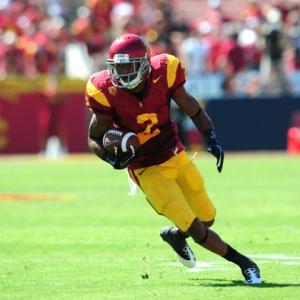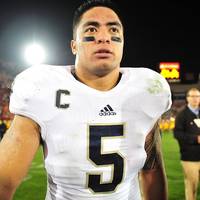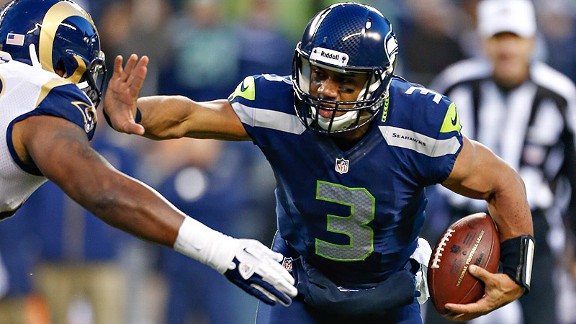Terron Armstead made headlines at the combine by running a 4.65 at 6-5 and 306lbs (it was later changed to an official 4.71, see above). I remember at the time wondering if Seattle would pull a reverse-Sweezy. Maybe they consider it? He’s got the length and the size they look for at defensive tackle. That’s some explosive speed for a big guy. Dion Jordan ran a 4.60 at 248lbs. Think about that comparison.
It’s fun to think about that kind of switch, yet in reality it’s unlikely. One of the reasons I suspect Seattle and Cable started to look at defensive converts is the extreme difference that’s started to emerge between offensive and defensive lineman. The best athletes in college play defense these days. As time goes on, it’s going to get harder and harder to find orthodox lineman apart from the usual stud left tackles. Once again the Seahawks are ahead of the curve in looking for defensive players who can switch. The league will catch on, especially if J.R. Sweezy develops into a permanent starter. We’d start to see more and more of this, because it could be the only way to match up physically in the trenches.
Moving from offense to defense — the reverse-Sweezy — seems unlikely. There’s already enough great athletes playing defense. Armstead is rare in that he actually has the tools to play offensive line in the modern NFL. Keep him where he is.
It’s been quite a journey for the former High School shot-putter. He started the draft process as an unknown from Arkansas Pine-Bluff, impressed at the Shrine game, made a last minute arrival at the Senior Bowl and left Indianapolis as a major talking point. No doubt many teams were scrambling to get hold of game tape after his performance at the combine.
As an athletic specimen, he’s the type Seattle probably salivates over. That’s why you can’t rule him out if he’s there at #56. As we’ve discussed before, the Seahawks can’t pay every offensive player top dollar. While Breno Giacomini performed very well for the most part last year, the right tackle position is sufficiently unimportant (context) that you don’t need to pay your starter $4.25m (Giacomini’s salary this year). It’s the kind of sacrifice you’ll need to make to keep guys like Russell Wilson, Percy Harvin, Russell Okung and Marshawn Lynch (etc) on the roster.
Armstead, if drafted at #56, would cost $644k as a rookie and a maximum of $1.2m by year four. That’s a huge saving for a position of limited importance (again, in context). Red-shirting him for a year behind Giacomini limits the need to throw him in at the deep end/ He could be spelled just like Sweezy and John Moffitt last year. It also allows Tom Cable to work with him and develop him into a more rounded pro.
I suppose you could argue that if the position is of secondary importance, why spend a second round pick? It’d be a fair point. Yet this is a team that has shown a tendency to chance their arm on upside. Armstead certainly has a lot of athletic potential and if they want to take a chance on a guy like this, they’re unlikely to find an alternative beyond day two. He has decent arm length (34 inches, the same as Menelik Watson, 1/4 of an inch shorter than Luke Joeckel). He’s definitely an intriguing player.
One of the reasons I argued heavily against taking Gabe Carimi in 2011 was because he’s a pure right tackle. I would never ever draft a player in round one who’s tagged as a pure right tackle. It usually means, like Carimi, they’re poor against the speed rush and play best in the run game. The NFL has changed and a lot of teams use dual rushers off the edge. Elite rushers like Mario Williams, Clay Matthews and J.J. Watt roam around, stunting and playing both edges. If you’re drafting a tackle in round one or two these days, I think the least you should expect is they can handle speed. A lot of these ‘pure’ right tackles can’t.
D.J. Fluker is another example. Watch Alabama tape and he has some struggles against speed. Yes he’s a powerful drive blocker for the run. I suspect, like James Carpenter, he’ll end up at guard because he’ll struggle when taking on the game’s best pass rushers. The one thing in Fluker’s locker is long arms — well over 36 inches to be exact. That’s some serious length.
Armstead has the quicks. It wouldn’t be misplaced confidence to believe he can cope well against a speed rush. I don’t take a great deal out of small school tape (see below) because the competition is so comparatively weak. Yet he did enough to keep me interested. And given Seattle has one of the best offensive line coaches in the league — I’d love to see what he could do with this guy. He’s a solid option at #56. Maybe even the type of player Seattle thrives on progressing.



